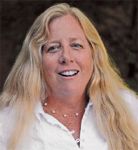Introduction: Recent Developments in HPLC/UHPLC
Special Issues
When choosing the articles to include in this supplement, my selection was based on a very simple criterion.
Recent Developments in HPLC/UHPLC
When choosing the articles to include in this supplement, my selection was based on a very simple criterion. My invitations went to the researchers that typically have something to say that I am interested in learning. The selections here are broad based; hopefully, to give you an overall perspective of current directions in the key separation areas.

Mary Ellen McNally
In my laboratories, we have long been interested in improving the precision associated with the assay measurement of the technical active ingredient. In our experiments, we found several areas that needed control to review with our laboratories worldwide. Details about optimum back pressure, wavelength selection, internal versus external standard use, and how to make sure carryover is under control are presented in this back to the basics article.
Researchers from the Molnár Institute for Applied Chromatography led by Imre Molnár outline the use of their predicted tool, a design of experiment model that uses gradient time and temperature and one other factor, either pH or ternary composition, successfully. Twelve experiments are necessary to complete this model — the advantage is fast evaluation using gradients and within a few hours more than 100 virtual experiments can be evaluated. Absolutely awesome!
The question of whether or not chromatographers have gone too far with the use of high pressures, which create frictional heating, a source of interference to accurate temperature control, is addressed by Dick Henry and his coauthors, Hillel Brandes, Dan Nowlan, and John Best. They postulate that popular column dimensions, labelled since the early 2000s as ultrahigh-pressure, ultrafast, and ultra-performance, along with current oven designs can lead to this problem. Investigating instrument bandspreading and instrument dispersion, the report also describes, via theoretical equations, the instrument optimizations required for these higher performance "ultra" columns. They conclude that future trends for both columns and instruments are hard to predict, and if higher operating pressures are used, they question how this will affect accuracy and precision in ultrahigh-pressure liquid chromatography (UHPLC). The authors request two very basic improvements: Better control of column temperature and independent monitoring of both column and instrument pressure, ultimately, achieved without adding to instrument dispersion. Instrument manufacturers, please take heed!
Those of us involved in supercritical fluid chromatography (SFC) in the late 1980s and early 1990s are skeptical of the resurgence over the last decade. Larry Taylor reports what is different now and predicts the future of SFC. His scheme of four protocols for the elution of four groups: Hydrocarbons, ethers, and esters; alcohols, amides, and anilines; ionizable acids and bases; and amphoterics, peptides, carbohydrates, water soluble vitamins, and inorganic ions, illustrate the breadth of materials that SFC is capable of analysing. The technology has moved beyond a niche technique for chiral molecules and preparative separations — move over HPLC!
In reading this supplement on the advancements and predictions in separations, my hope is you will take time to think about the future directions in your laboratory. My special thanks to the authors, for a job well done.
LCGC ONLINE
The highlights of UHPLC/HPLC editorial content from chromatographyonline.com
Analysis of the State of the Art: Liquid Chromatography Instrumentation
A panel of experts were invited to assess the current state of the art of liquid chromatography instrumentation and to try and predict future developments. bit.ly/16HTrsJ
Phyllis Brown: A Story of Serendipity, Perseverance, Vision, and Chromatography
Karyn M. Usher interviewed Phyllis Brown, a pioneer at the forefront of high performance liquid chromatography in the 1960s. Article and podcast available on-line. bit.ly/PhyllisBrown
The LCGC Blog: An Excel Tutorial for Modeling Chromatographic Separations
In this LCGC Blog post, Kevin Schug describes a chromatography tutorial paper written by Sandy Dasgupta and Akinde Kadjo in which an Excel macro (developed by Kadjo) that is capable of visualizing the development of chromatographic separations is explained. bit.ly/17wUn0A
Security Vetting: Detecting Medicine Residues in Meat
The Column spoke to John Points from LGC about analysing veterinary residues in the food chain, the role of the National Reference Laboratory, and recent food scares in the media. bit.ly/13CeGW8

Determining the Effectiveness and Safety of Cinnamon Derivatives for Diabetes Treatment with HPLC
March 27th 2025Cinnamon and its byproducts have been used for many years because of their antidiabetic effect. In a joint study conducted by Gazi University (Ankara, Turkey) and Düzce University (Düzce, Turkey), high performance liquid chromatographic (HPLC) and thin-layer chromatography (TLC) analyses, macroscopic analyses, and enzyme inhibition assays on diabetes-related enzymes were performed on cinnamon samples to determine whether they are safe to use for health purposes.










